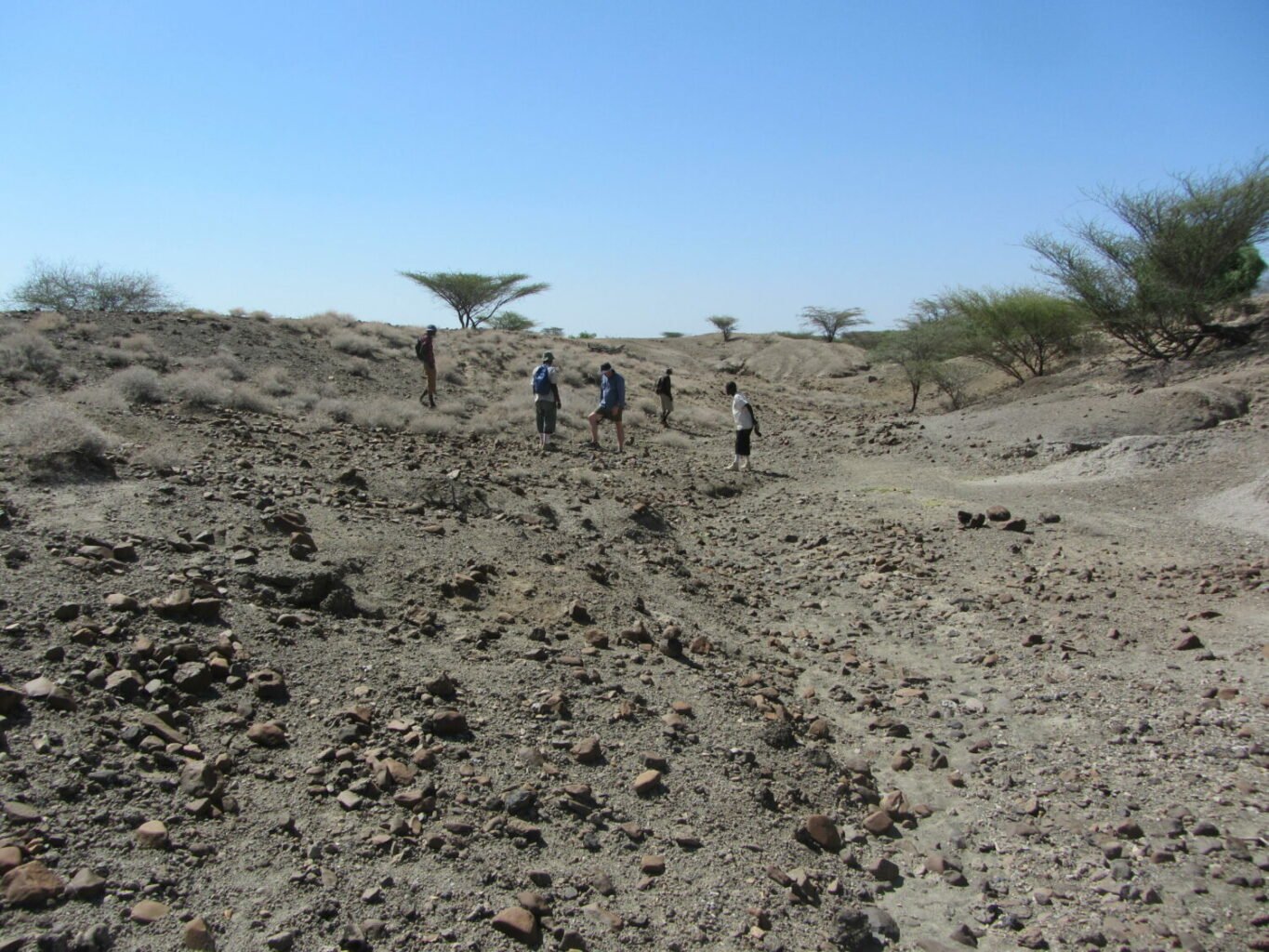From the Field
Kevin Hatala is an assistant professor of biology at Chatham University. He was awarded a Leakey Foundation Research Grant in our fall 2017 cycle for his project entitled “Paleoecological investigation of 1.5 Ma footprint sites near Nariokotome, Kenya.”

Our research team recently returned from fieldwork near Nariokotome, in northwestern Kenya. Our research was focused on surveys and preliminary excavations of sites in this region that preserve 1.5 million-year-old (Ma) fossil footprints. While fossil footprints have been historically rare sources of data in paleoanthropology, recent discoveries suggest that footprints are not as rare within the human fossil record as we may have assumed. Efforts to recover these data can offer fresh opportunities to test and refine hypotheses concerning hominin anatomy, behavior, ecology and/or land use patterns.

The skeletal fossil records from the east and west sides of the Turkana Basin at around 1.5 Ma are quite well-known to paleoanthropologists. On the east side of Lake Turkana, the Koobi Fora region is home to an abundance of hominin fossils from this time period, which have been attributed to species such as Homo erectus, Homo habilis, and Paranthropus boisei. On the west side, far fewer fossils are known but one of the most famous hominin fossils – KNM-WT 15000, also known as “Turkana Boy” – was discovered here. Fossils attributed to Paranthropus boisei are also known from West Turkana at this same time interval.
Our work is aimed at uncovering new fossil footprint and skeletal fossil data that we can use to better understand the ecological contexts of hominins living on the east and west sides of Lake Turkana around 1.5 Ma. We previously conducted similar work near Koobi Fora, but this was our first field season on the west side of the lake. Overall, it was a remarkable success!

We worked with a small field team, which included myself, Dr. Neil Roach (Harvard University), Stephen Longoria (National Museums of Kenya), Matthew Macherwas (National Museums of Kenya), Sammy Lokorodit (Nariokotome), and Francis Ngasike (Nariokotome). Our co-PI Dr. Kay Behrensmeyer (Smithsonian Institution) was prohibited from travel due to a government shutdown, which threw an unexpected wrench into our plans. But, thanks to cell phones, we were still able to coordinate with her remotely from the outcrops.

Within just a short two-week field season, we located four fossil footprint surfaces, all at slightly different stratigraphic levels dating to around 1.5 million-years-ago. We started excavations and these surfaces have already revealed footprints from a variety of animals, in a variety of contexts. These data will help substantially to build upon the limited skeletal fossil record that is known from this region. We also conducted a series of fossil surveys, called “bone walks”, in which we recorded all skeletal fossils present on the ground surface within the same sedimentary deposits. This provides us with unbiased samples of skeletal fossils, distinct from those in which individuals might preferentially collect only the most exciting finds, such as primates and hominins.
With these new data (including a few particularly exciting fossils!), we’ll head back to the museum and labs for analysis. We hope that this evidence can help us begin to develop a more complete picture of hominins and their environments in the Turkana Basin around 1.5 million-years-ago and provide us with insights into how ecological contexts may have shaped some of the patterns and processes that occurred at this particular time and place in human evolution.


